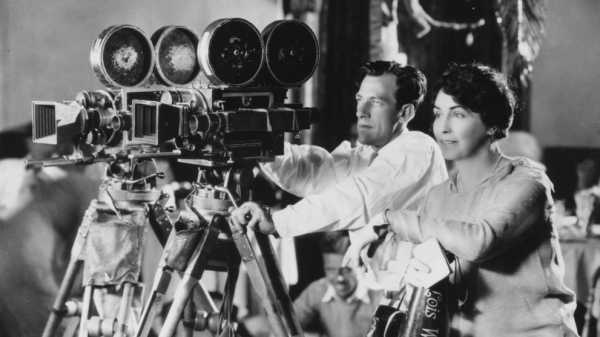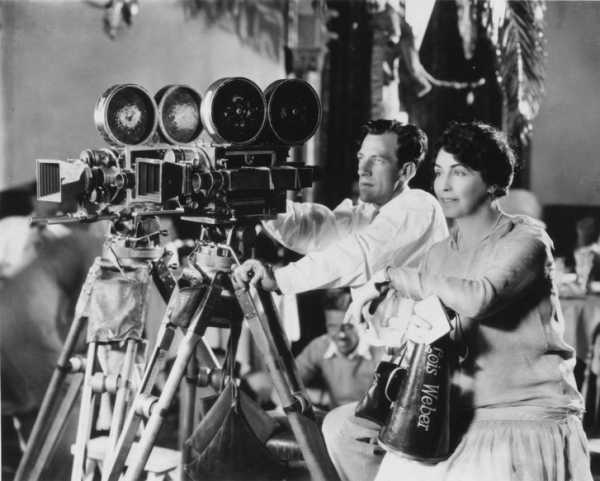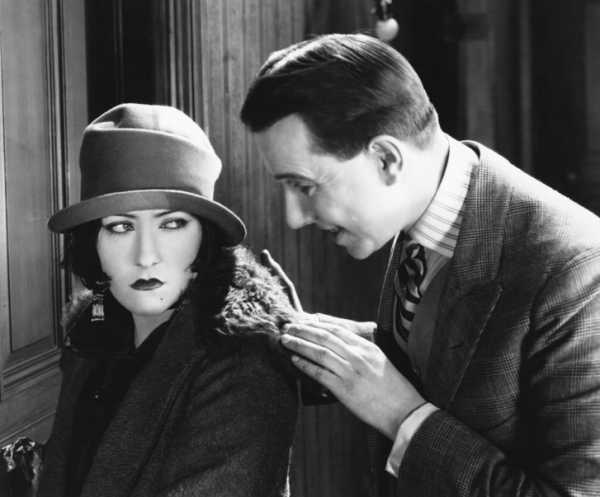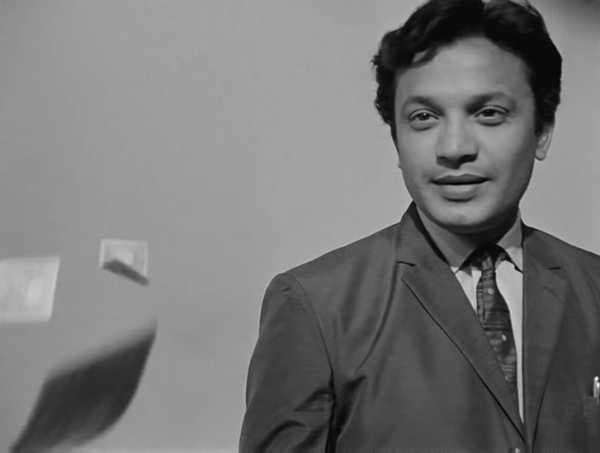

Lois Weber’s films are infused with a moral passion that’s matched by her forceful, fervently detailed artistry.
Photograph Courtesy Milestone Film & Video
For every film that’s available to stream, there are many more, of equal merit, that aren’t accessible online. Some of the best movies of all time are still being released on disk only, whether DVD or Blu-ray, and my advice for enthusiasts who find something they like in those formats is: buy it, because what’s available to stream today may vanish from one or another Web site tomorrow. Here are five noteworthy recent disk releases.
“The Dumb Girl of Portici”
The rediscovery of the films of Lois Weber is long overdue, and it’s happening largely through the work of Milestone Films, which has released two of her earliest features, “The Dumb Girl of Portici” and “Shoes,” both from 1916, on DVD. A former street-corner preacher, Weber made films that are infused with a moral passion that’s matched by her forceful, fervently detailed artistry. “The Dumb Girl of Portici,” a historical drama set in seventeenth-century Naples (then under Spanish occupation), stars the majestic dancer Anna Pavlova (in her only dramatic film performance) as a young woman named Fenella who is mute. It’s a romantic melodrama involving an aristocrat in disguise, Fenella’s romance with him, and the uprising of the local population in opposition to the oppressions of Spanish overlords. The varied strands of Pavlova’s performance, with its blend of still theatrical ardor and operatic outbursts of rage, point toward the future of movie acting—no less than Weber’s dramatic vision points toward the future of the world at large. The action builds to revolutionary violence, which Weber (working with her husband Phillips Smalley) films with an utterly sympathetic yet nonetheless terrifying fury. As the First World War raged and old regimes tottered, Weber’s vision of justified uprisings and the unforeseen horrors that they promised proved prophetic.
“Shoes”
In “Shoes,” Weber looks at intimate horrors at home, in a drama (based on a novel by Jane Addams) about a young shopgirl in Los Angeles named Eva Meyer (played by the sixteen-year-old Mary McLaren, Weber’s discovery) who, with her job as a salesclerk in a five-and-ten, is the sole support for her family. Weber is specific about Eva’s troubles: she’s paid five dollars a week; her shoes are falling apart, their soles replaced by cardboard, and a new pair costs three dollars; but her wages go almost entirely to pay for the family’s rent and food. Eva goes to work virtually barefoot, putting her health as well as her mental stability at risk, and when a middle-aged roué, a night club singer, flirts with her, she tries mightily to hold out against his promises of money (as it’s understood, in exchange for sex). Weber films largely on location in scenes of a grimly realistic specificity, from the routine of work to the family’s overcrowded, embittered, ramshackle apartment, depicting a domestic order that’s as oppressive and unjust as the public regime. (Weber’s filmography is, like that of many pioneering filmmakers, copious; I hope that her other surviving films will be similarly rediscovered and made available.)
“Manhandled”

Gloria Swanson and Tom Moore in a scene from Allan Dwan’s “Manhandled,” from 1924.
Photograph from Everett
Allan Dwan, whose career ran from 1911 to 1961, is one of the greatest Hollywood directors, and his silent films are among the treasures of the era. The Blu-ray release, from Kino Lorber, of two of his films starring Gloria Swanson, “Manhandled” and “Stage Struck,” suggests the scope and the power of his artistry. “Manhandled,” from 1924, is a pure urban romantic comedy, a blend of a Horatio Alger tale and a cautionary fantasy of glamour, the subject of which is working women’s yearnings and prosperous men’s predatory schemes. Swanson plays Tessie McGuire, a salesclerk in the bargain basement of a department store, whose feisty attitude comes to the attention of the store’s frivolous young heir (Arthur Housman) whose friend Garretson (Paul McAllister), a novelist, is looking for a working-class subject. Tessie enters the beau monde of the posh arts, paid to pose for a sculptor (Ian Keith) who tries to rape her, hired as a hostess by a fashion designer (Frank Morgan—yes, the future Wizard of Oz) who tries to seduce her, all while her boyfriend, Jim Hogan (Tom Moore), a mechanic by day and a taxi driver by night, plots to make millions by inventing a fuel-saving device for automobile engines. Dwan (himself a former engineer who entered movies from the technical side, as an innovator in lighting) is a cinematic rationalist who links scientific dedication to virtue, but he looks empathetically at the temptations of easy money, filming workaday troubles with comedic flair, as in a subway sequence, showing Tessie struggling to get home from work, that’s an all-time anthology piece of bitter humor.
“Stage Struck”
“Stage Struck,” from 1925, opens and closes with astounding original Technicolor footage. The beginning is a brilliant comedic misdirection: footage of Jenny Hagen, a celebrated actress with a lavishly colorful stage show—featuring her as Salome bearing the head of John the Baptist on a platter—cuts to black-and-white footage of Jenny Hagen, a waitress in a New Martinsville, West Virginia, working-person’s café, bearing a platter of beans and, absorbed in her glamorous fantasy, dropping it. The movie is a romantic comedy about Jenny’s love for the café’s star wheatcake-flipper, Orme Wilson (Lawrence Gray), who’s crazy for actresses. Then a glossy and high-mannered stage star named Lillian Lyons (Gertrude Astor) arrives with a visiting Ohio River show boat and aims her seductive wiles at Orme—and, to compete for his affections, Jenny manages to find a way into the show. Dwan, filming on location, evokes a sort of sociology on the wing in his view of the varied, energetic worlds—the intrinsic dramas and comedies—of the lives of working people. Swanson’s superb physical antics include her efforts to thread the boisterous lunchtime crowd of factory workers while bearing high-piled trays of food; her closeups, in a mirror, practicing her correspondence-course acting lessons; and a climactic sequence, in the show boat’s theatre, featuring her rowdy tangle with Lillian.
“The Hero”

Uttam Kumar stars in Satyajit Ray’s “The Hero,” from 1966.
YouTube
The Criterion Collection maintains a leading role in the restoration and presentation of classics and the rediscovery of less familiar masterworks of world cinema, as they’ve done with this drama by Satyajit Ray, from 1966 (available in DVD and Blu-ray formats). “The Hero” is an exemplary work of reflexive modernism set against a tangled grid of clashing traditions. It’s centered on a popular movie actor named Arindam Mukherjee (played by the popular movie actor Uttam Kumar), whose wealth and fame are matched by arrogance and egotism. On a train journey from Calcutta to New Delhi to receive an award, Arindam crosses paths with a broad cross-section of travellers who provoke his self-examination and spark his inhabitual introspection—especially a journalist for a women’s magazine (Sharmila Tagore) who, indifferent to commercial movies and to his charms, nonetheless interviews him for her publication. Her probing questions and her insightful observations force him to reckon with the compromises and the betrayals upon which his successful career has been built. Subplots—involving a craven advertising executive who wants his demure yet independent-minded wife (Susmita Mukherjee) to flirt with a prospective client; a young woman (Sumita Sanyal) who sought a private, altogether earnest and professional audition with Arindam when she couldn’t get one the official way; and an adolescent girl (Lali Chowdhury) who attributes healing powers to Arindam—evoke women’s struggles against an enduringly patriarchal society, as well as the illusions of popular culture that reinforce their subordination.
“Moses and Aaron”
The Blu-ray release, from Grasshopper, of Jean-Marie Straub and Danièle Huillet’s 1974 film “Moses and Aaron”—a staging, in plein-air settings in Egypt and Italy, of Arnold Schoenberg’s 1932 opera—is a glorious paradox. The film itself contains a superb performance, conducted by Michael Gielen, and featuring Günter Reich as Moses and Louis Devos as Aaron; Straub and Huillet film it in starkly expressive, fiercely analytical images that emphasize Schoenberg’s view of the terrifying threats of demagogy and false prophecy. But the most notable works in the set are its bonuses—in particular, the 1965 film “Not Reconciled,” a fifty-five-minute adaptation of Heinrich Böll’s novel “Billiards at Half-Past Nine.” An exemplary work of political cinema, the film distills the book’s three-generation span into a bold and brisk construction that converges, with abrupt editing, fin-de-siècle formalities, the age of the First World War, the horrors of the Third Reich, and the remilitarized West Germany of the Cold War era. “Not Reconciled” matches its political outrage and defiant violence with an original style of bluntly declamatory performances and oblique, fragmentary visual compositions; it fuses a sense of historical and aesthetic crisis. Another bonus, the sixteen-minute “Introduction to Arnold Schoenberg’s ‘Accompaniment to a Cinematic Scene,’ ” from 1972, is centered on letters from the composer to the artist Wassily Kandinsky—from 1923—decrying the anti-Semitism of which he was already a victim and recognizing that the insults of the day were heading inevitably toward exterminationist violence. For the filmmakers, the project is something of a personal statement: Straub appears onscreen to introduce a reading of those letters, which is followed by Huillet looking at the camera while citing a text by Brecht that links fascism to capitalism. The entire disk is a crucial introduction to a body of work that remains a cornerstone of cinematic modernity. (Huillet died in 2006, at the age of seventy; Straub, who’s eighty-five, is still making movies.)
Sourse: newyorker.com






